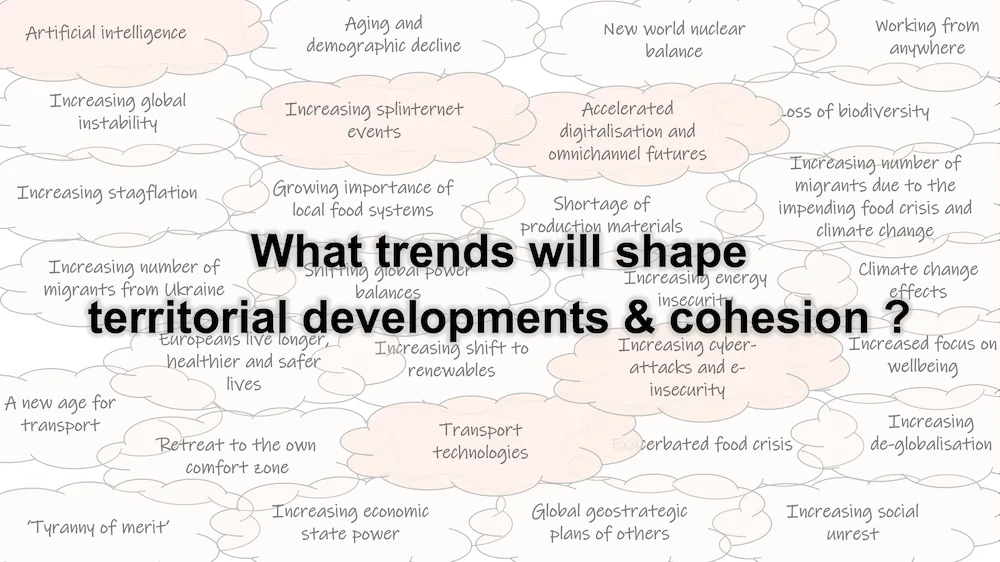Mega-trends shaping territorial cohesion
December 2022

What trends will shape territorial developments and cohesion outlooks in the years to come? During 2022 we addressed mega-trends in several studies, e.g. for the European Parliament (Öffnet in neuem Fenster), the European Committee of the Regions (Öffnet in neuem Fenster) or ESPON (Öffnet in neuem Fenster). Bringing together the various pieces of trend analysis provides a rich picture about possible developments which may shape territorial development and cohesion in Europe. Therefore, we have brought them together in a series of blog posts (to be published between December 2022 and February 2023) addressing societal, technological, economic, environmental and political trends.
Future trends will probably exacerbate spatial and societal fragmentation, interdependencies and policy mismatches. This is likely to increase perceptions of uncertainty and vulnerability in a world of disruptive changes leading to a ‘pervasive uncertainty’.
Trends considered to have the strongest impacts on territorial development and cohesion include exogenous technological trends (e.g. digital society, post-carbon and circular economy), social change (e.g. migration, aging, fluid social institutions and shifts in values), environment (e.g. adapting/mitigating climate change and managing scarce resources), and economic (e.g. slowbalisation, peak of everything, working from anywhere). Also political trends play an important role, both political developments in Europe, as well as those in other parts of the world which affect development prospects in Europe.
In many regards the trends point at a risk of increasing concentration on urban areas with growing territorial imbalances and inequalities, which may translate into social fragmentation and increasing discontent.
Technological trends
In this blog post we summarise some key findings concerning technological trends.
Technological progress is a driver of economic and social change, potentially severely impacting spatial development in Europe. Developments that will shape future perspectives range from social and new media as well as mining and processing big data to automation, digitisation, artificial intelligence and bio-tech. Technology fusions blurring the lines between physical, digital and biological systems are expected to have disruptive effects. These can be related to work organisation, social engagement and the transformation of industry, health and education systems. In the initial phase technological change will exacerbate spatial inequalities. Technological revolutions or industrial transformations lead to phases of spatial concentration, i.e. accelerate developments where the ‘winner takes all’.
To read this post you'll need to become a member. Members help us fund our work to ensure we can stick around long-term.
See our plans (Öffnet in neuem Fenster)
Bereits Mitglied? Anmelden (Öffnet in neuem Fenster)


